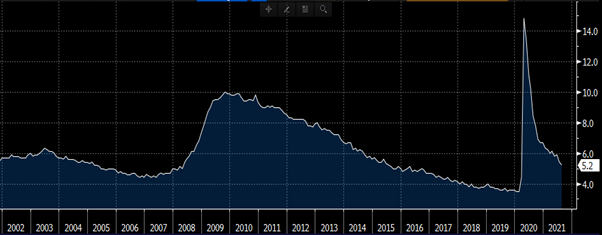
Trading in the financial markets is the action of buying and selling financial assets for a profit. It is subtly different to investing which is a longer term buy and hold strategy over months and years, to generate income, financial return, and, of course, profits.
Trading is most commonly done in cash instruments such as:
- Shares
- Foreign exchange
- Bonds
- Derivatives such as options, commodity futures, and CFDs (contract for difference)
Related article: Tips for New Traders – Err on The Side of CautionInvestment banks and hedge funds will also trade more complex assets and derivatives such as interest rate swaps, mortgage back securities, and credit default swaps.
One common error of retail traders is they simply focus on the question
should I buy? or
should I sell?They ignore far more important considerations such as:
- Where do I exit a profitable trade?
- Where do I close a trade if I’m wrong?
- What should my position size be?
- What economic data is coming up?
- Are there any central bank meetings on the horizon?
- What company earnings reports are due?
They also typically ignore market volatility and also market liquidity.
These are all important considerations and a critical part of risk management.
Profitable trading is not about predicting the future, but about trading the present price action. It’s about having a process, the discipline to stick to the process, and the self-awareness of our own behavioral biases.
Understanding of fundamental analysis, technical analysis, and behavioral finance will significantly improve a trader’s performance.
Fundamental analysis is the study of the underlying forces that affect the well being of the economy, industry groups, and companies.
Information such as economic data (e.g., employment data, GDP, and inflation data) company earnings, and central bank monetary policy adjustments, and their affect on asset prices are prime examples of fundamental analysis.

As the U.S. unemployment rate (above. Source: Bloomberg) continues to fall, we would expect the U.S. central bank (Federal Reserve) to reduce the monetary stimulus (taper quantitative easing), which would in turn push interest rates yields and the dollar higher. Both being significant headwinds to equity prices.
Technical analysis is the study of historical market action to predict future price movements and trends. It is particularly powerful when used as a risk management tool for disciplined trade entry, taking profit, and identifying stop loss levels to minimize losses.
After all, profitable trading is about having small profits, small losses, and big profits, while eradicating big losses.
The most common form of technical analysis in trading is the trend following strategy.
The chart below of the Nasdaq includes the 8 and 21 day simple moving average (the average price for the last 8 and 21 days).
An example of a simple trend following rule would be to only go long (new buy order) when both moving averages are going up and to only go short (new sell order) when both moving averages are going down.
Using this rule would profit from all the intermediate trends (trends up to 3 months), the trader would never be on the wrong side of the trend, and the trader would only incur losses when the markets went into a sideways trading range.

Nasdaq daily chart with the 8 (yellow) and 21 (pink) day simple moving averages. (Source: Bloomberg)
Behavioral finance is the study of the influence of psychology on the behavior of financial practitioners and the subsequent effect on the markets. It helps explain why we make irrational financial decisions.
Related article: Understanding Cryptocurrencies – The Importance of Financial Literacy for the Part-Time InvestorClassic examples of behavioral finance are historical bubbles, such as 1630 when people in the Netherlands were willing to sell their houses to buy Tulip bulbs as the prices of the flowers surged higher before eventually collapsing.
Another example, in 1990 during the Japanese bubble, the Imperial palace in Tokyo, one square kilometre of mainly grass, was worth more than all the real estate in California.
And again, during the Nasdaq tech bubble in 2000, the market capitalization of Yahoo was 25 times larger than the market cap of the entire Chinese equity market.
Related article: Crypto, Blockchain, and Crypto Assets 101
We look back at these speculative bubbles in disbelief, but as humans, understanding our behavioral biases is a key to successful trading.
On June 9th, 2020, Hertz, JC Penny, and Chesapeake Energy all doubled in price as retail traders rushed into the stocks trading on tips from social media chat rooms, even though all three stocks had filed for bankruptcy! And less than 2 weeks later the Grayscale Ethereum ETF was trading at a 515% premium to Ethereum. Somewhat irrational behavior!

At Intuition Now we have created a course
Trading and Investing with Discipline which combines 12 hours of webinars with 6 of ‘Intuitions’ e-learning modules (equity trading, fx trading, commodity trading, crypto assets, options and algorithmic trading).
The course also incorporates quizzes and has been delivered to some of the largest banks and commodity trading houses in London, New York, Hong Kong, and Singapore.
It uses Bloomberg charts to discuss fundamental analysis and take an in depth look into technical analysis, behavioral finance, and risk management.
It also uses decades of research and python-coded back tests to highlight the rules, habits and traits of the most profitable, consistent, and disciplined traders, while also highlighting the repetitive and predictable habits of the unprofitable traders.
Click the link below to learn more.






